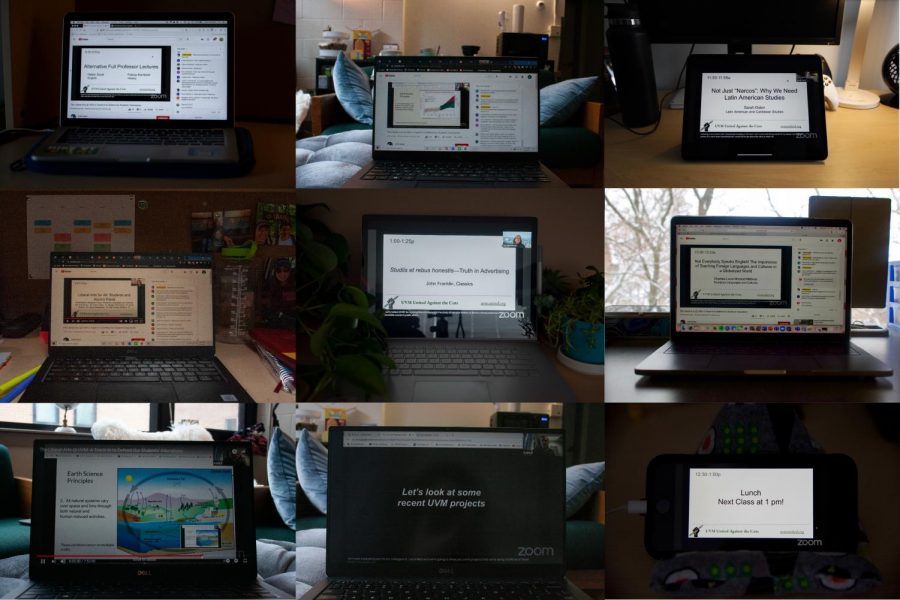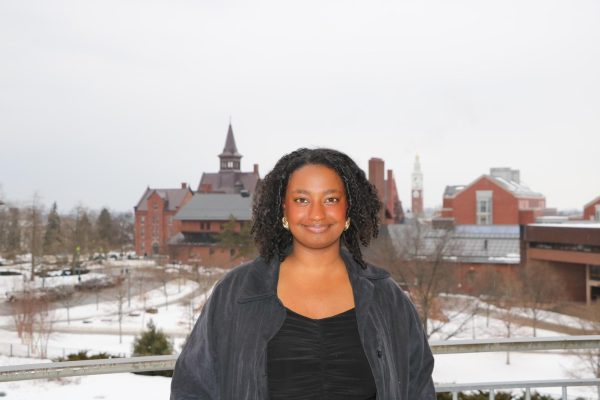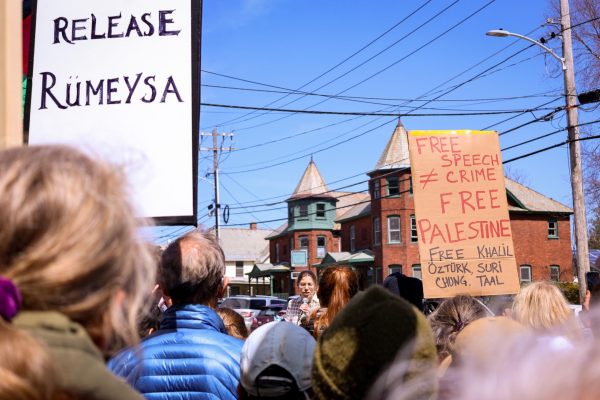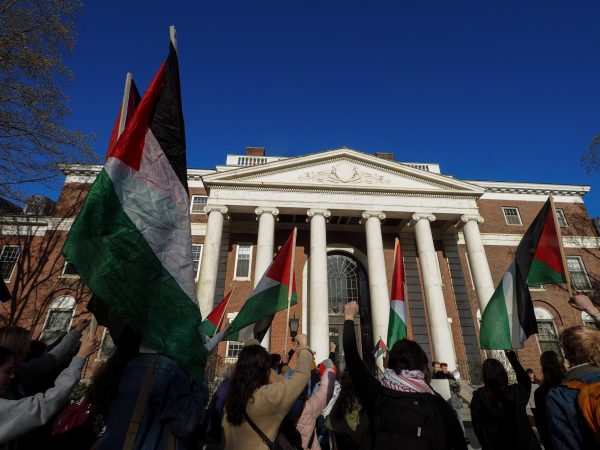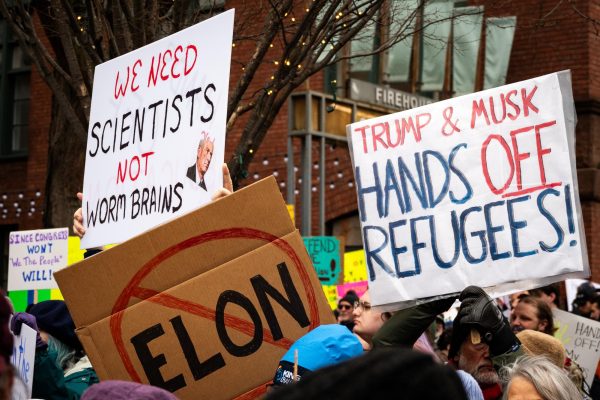Faculty and students protest CAS cuts in all day teach-in
A live streamed teaching event was shared over YouTube Feb. 3. from 9:00 a.m. to 5:00 p.m. in protest of the recent cuts made to the College of Arts and Sciences.
An eight-hour long teach-in took place last Wednesday where faculty, staff and students protested the proposed elimination of over two dozen programs in the College of Arts and Sciences and the firing of three professors.
The teach-in was live-streamed on YouTube from 9 a.m. to 5 p.m. Feb. 3, featuring a series of speakers throughout the day who talked about the importance of a liberal arts education and attempted to debunk the administration’s reasoning for slashing over two dozen majors, minors, departments and masters programs.
The day-long virtual event was run by UVM United Against Cuts, a coalition of UVM students, faculty and staff who joined together during the 2020 Spring semester when stipends were taken away from faculty whose workloads increased under the pandemic.
Helen Scott, an active member of UVM United Against Cuts and English professor at UVM, helped organize the teach-in to protest the cuts and to educate the community.
“It seems that the administration is not responding to facts. It’s not responding to reason. It’s not responding to letters and petitions from all over the country,” Scott said. “We need to up the ante.”
The group has been active since the summer in protesting University budgetary decisions to roll back salaries and now cut programs, testifying at the State House and holding a car rally around President Garimella’s house.
The organizers held this event on a weekday to call attention away from everyday life, Scott said. They originally planned to hold it at the same time as the Board of Trustees meeting, but wanted to save time at the meeting for public comment.
Several professors canceled class during the day to encourage students to attend the teach-in instead.
The administration’s stated reasoning behind making these cuts was to address an $8.6 million deficit in the CAS budget, according to Dean Falls, but some of the event’s speakers believe that these cuts were part of a greater, systematic plan to underfund CAS and prioritize more vocational majors.
“We’ve seen this coming for a long time because the financial priorities of the administration have been very evident in the way that they’re choosing to allocate funds,” Scott said. “I do think that the administration is seeing this moment of crisis as an opportunity.”
Many of the speakers talked about why exposing students to the liberal arts is crucial given recent national events such as widespread in-compliance to COVID-19 guidelines, growing xenophobia and the insurrection at the Capitol.
“Everyone in this country, for some very obvious recent reasons, would benefit from understanding better social and economic equality,” said Professor Sarah Osten in her presentation, “Not Just ‘Narcos’: Why We Need Latin American Studies.”
Osten is an associate professor in the history department and is the only historian of Latin America at UVM. The Latin American & Caribbean Studies interdisciplinary major is one of the programs slated to end.
Osten argued that big-picture concepts such as racism cannot be taught in the abstract and must be shown through cultural case studies. Removing these majors, she argued, will prevent students from being able to completely focus on these important issues.
The decision to cut some programs and not others was based on enrollment data, stated CAS Dean William Falls and Provost Patty Prelock in a Dec. 4 email announcing the planned cuts.
“The enrollment in each one of the majors proposed for termination amounts to less than one-half of one percent of the college’s total student enrollment,” Falls and Prelock stated in the email.
At the Feb. 5 board of trustees meeting, just two days after the teach-in, administrators defended their decision, claiming it will strengthen the liberal arts education at UVM by bringing together “natural synergies” in different curriculums.
“There is still a robust liberal arts education,” Prelock said. “Since all of this has occurred, Dean Falls reports some significant collaborations and discussions among these chairs and most departments.”
During the teach-in, many speakers challenged the reasons the administration has given for rolling out cuts.
Event speaker Ellie Hagopian said UVM will be economically disadvantaged in the long-term by this decision in her presentation titled, “How UVM admin manufactured a budget crisis and what we can do about it.”
“Cutting the humanities and the social sciences to pursue a different focus may very well result in lower enrollment going forward,” she said.
Plastered on the screen behind her was a graphic claiming, “the College of Arts and Sciences contributed 44% of the net undergrad tuition dollars,” and that “CAS only receives 27% of the subvention fund over this time period.”
Hagopian used this data to bolster her point that CAS contributes a significant amount of money to the University as a whole. Therefore, diminishing the funds allocated to supporting its programs is counterintuitive to remedying the University’s financial dilemma.
Additionally, supporting STEM programs in lieu of humanities will not help enrollment because students pursuing an education in the liberal arts “will go somewhere, but they won’t go here,” said Music Professor David Feurzeig.
In a Q&A session, senior Clara Martorano said she doesn’t expect that colleges outside of CAS are immune to similar cuts.
“It’s not really about humanities versus STEM,” said Martorano. “It’s about our education versus the administrators’ greed.”
At the board of trustees meeting two days later, Provost Prelock did in fact echo what Martorano predicted, announcing that all other colleges will undergo the same review process as the college of arts and sciences, which may lead to more cuts.
“This is an important process in which all colleges and schools should engage regularly, not only in response to our current fiscal challenges, but also as part of on-going quality assurance efforts ensuring the maintenance of our most important programs.”


